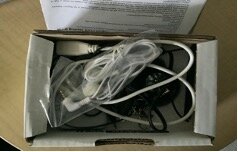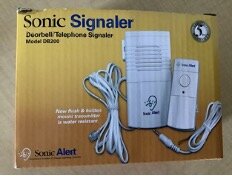Assistive Technology for Vision and Hearing
ASSISTIVE TECHNOLOGY FOR VISION AND HEARING
In this installment, we focus on assistive technology (AT) equipment available to help students see and hear better. Both kinds of technology can make a significant difference in a child’s confidence and academic performance; beyond a scholastic context, many of these devices can add to the person’s quality of life at home, among friends and in many other scenarios.
Visual Assistive Technologies
Our collection of visual aids can fill in much of the information that’s missing or hard to process when a user faces visual challenges.
VISTAC Color Identifier
“Reads” and identifies the colors of text, objects, photos and other stimuli for people with partial or total color-blindness.
C-Pen
Scans printed text and converts it to speech. The device is portable, pocket-sized and easy-to-use. It’s particularly useful for students and others with any degree of dyslexia.
OrCam MyEye2
Wearable device that reads print and digital text out loud for people with visual and reading-related impairments.
Bright Switch
Helps users with visual impairment locate device switches; produces bright flashing light, vibration and even sounds to guide the person’s attention to the switch they need to find.
Kapten Plus Voice-activated GPS navigator
Helps independent users get around with Global Positioning System (GPS). Instead of visual cues found on ordinary GPS devices, the Kapten Plus provides an auditory signal as a guide. Especially useful for visually impaired people on-the-go, whether they need to get across town or across the globe on their own.
Hearing Assistive Technologies
Many of the AT devices available for hearing-impaired people are designed with the same intent as the devices for those with visual impairments: Either to beef up the original input (for those with limited capabilities) or convert the input into a more workable form (for those who need to process information through a different sensory system entirely). Some of our inventory makes sounds louder. Other devices convert sound into a medium the student can process more easily.
ChatterVox Headset Micro
Amplifies speech and other sounds and delivers it to the user via a wearable headset.
B-Calm Audio Sedation System
Provides a wide range of soothing soundtracks specifically designed to help people with autism cope with disruptions and other disturbances. Helps the user stay focused and relaxed.
Central Alert System
Notifies hearing-impaired users whenever there’s a home alarm or other sound-based notification. Includes bright light, bed shaker, doorbell, phone and other modes.
Sonic Signaler
Lets hearing-impaired users know instantly whenever it detects a doorbell or incoming phone call.
Pocket Talker Ultra
Helps users focus on sounds closest to them (like a conversation) while reducing background noises and other auditory distractions.
These visual and auditory aids are part of Hope Haven’s inventory of AT devices that help people with special needs get along more successfully in the world. It’s like a lending library, where you check out the equipment you need, then return it when you’re finished so someone else can use it.
Because our AT program operates through Florida Alliance for Assistive Services and Technology (FAAST), the equipment is available for use by any member of the disabled community—not just students associated with Hope Haven.
All equipment is thoroughly cleaned, inspected and disinfected before and after each use.
To learn more, including an updated inventory, schedule a consultation. Or contact our FAAST program coordinator directly at 904-346-5100, ext. 336.










